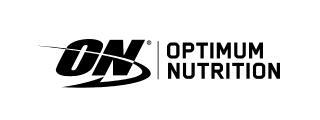Could sugar be damaging the inside of your body more than you realise?
Did you know that high intake of sugar, especially of the fructose and processed varieties, may lead to increase of visceral fat?
This is the type of fat that is laid down around internal organs, and for many people is unseen or felt until a chronic health condition is discovered or internal scans are done.
Visceral fat is associated with:
- Insulin resistance and blood sugar instability – may lead to increased risk of diabetes
- Elevated inflammation – the precursor to many degenerative conditions, including dementia, heart disease, diabetes and accelerated aging
- High LDL and triglyceride levels
- Obesity and stubborn weight gain especially around the midsection
- Increased cardiovascular disease risk
Also associated with
TOFI, or
Thin on the Outside, Fat on the Inside, this describes those people who may look and feel healthy on the outside and may have excellent fitness levels, but under the surface they are carrying large deposits of metabolically damaging fats around vital organs – such as the heart, liver and digestive system, and in the muscles.
Our bodies may be ageing on the inside much faster than what is obvious on the outside.
TOFI people may identify with:
- Following a low fat diet but never losing weight
- Choosing muesli and fruit with low fat milk/yoghurt for breakfast
- Loving juices over eating whole foods fruit and vegetables
- Craving sugars and a sweet fix for that 3pm energy slump
- Having a moderate to high intake of alcohol – such as 1 or 2+ glasses of wine each day
So what actually is inulin and how might it help?
Inulin is a naturally occurring oligosaccharide (chain) carbohydrate or fibre found in many plants, that provides a storage form of energy for that plant.
The human digestive tract has a limited ability to break down inulin by our enzyme activity, and instead it passes through our digestive tract as a whole intact fibre, exerting prebiotic effects and acting as a promoter of beneficial gut bacteria. A fertiliser for your garden of gut bacteria.
Inulin is found in onion, bananas (especially green), garlic, asparagus, leeks, dandelion greens or root, Jerusalem artichoke, chicory, jicama and yacon root.
As well as exerting prebiotic effects on beneficial strains of bacteria in the digestive tract, especially increasing growth of
Bifidobacterium and
Lactobacilli and supporting production of Short Chain Fatty Acids (SCFAs) which are essential for bowel health
, inulin has also been shown to inhibit growth of pathogenic or bad bacteria.
Early studies of inulin supplementation show good improvement in serum levels of cholesterol and triglycerides, and reduced levels of liver and muscle fatty deposits along with improved fasting insulin levels.
The downside of inulin?
This long chain soluble fibre falls into the category of a FRUCTAN, and those with FODMAPs intolerance or IBS may have negative reactions to it – namely adverse bowel reactions such as bloating, wind, discomfort or diarrhoea due to increased fermentation of carbohydrate starches and osmotic water movement in the bowel. Presence of
SIBO or candida may also result in undesirable digestive side effects as the inulin prebiotic effect may in fact PROMOTE growth of bad gut bacteria or yeasts.
How do I tell if it’s right for me?
Starting with food sources of inulin may be a good way to gauge tolerance to this prebiotic fibre. If you know that you are unable to eat onions or garlic for example, it’s unlikely that you’ll be able to tolerate a higher dose of isolated inulin in a supplement or powder form unless your IBS or SIBO issues are addressed first.
How to tell if you have visceral fat?
The best test to determine your internal fat levels is to run a DEXA scan or MRI which measures different densities of tissue in the body, mainly looking at bone, muscle, water and fat. These investigations can identify different levels of fat deposited in the body and where they are located.
A bio-impedance body scan can also be useful to determine muscle, water and fat densities, and can provide excellent benchmarks to work towards on your fat loss and weight management journey.
Using blood tests to look at liver enzymes, cholesterol and triglyceride ratios, blood glucose measures, as well as overall inflammatory markers such as CRP and ESR can also point towards visceral fat deposits and general health.
Article by Nutritionist Karen Ball




















